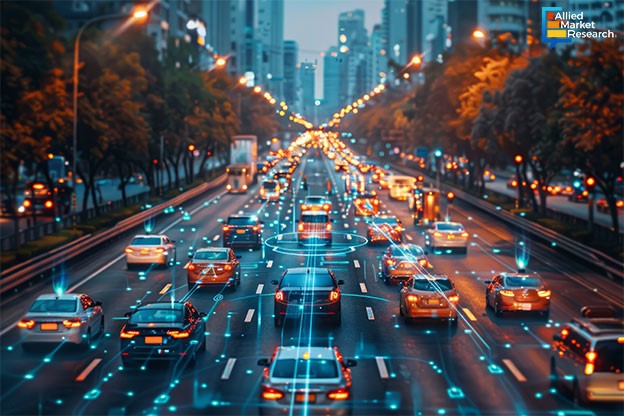Integrated Traffic Systems: Which Technologies Should Your Company Invest in to Maximize Profitability?

30 Apr
2024
Key takeaways:
- Introduction
- Latest developments in the integrated traffic systems industry
- The growth of the domain in the Asia-Pacific region
In the decades of the 1980s and 1990s, most of the developed and developing countries experienced continuous waves of industrialization. This process of industrialization, followed by urbanization, led to a massive influx of people in tier-1 and tier-2 cities who came in searching for jobs. This led to a huge rise in the population densities of urban areas and metropolitan towns. Hence, in the 21st century, most of these urban spaces face the problem of congestion.
High vehicular traffic has been a characteristic feature of almost all metropolitan cities across the globe. As per a study by WHO, around 1.19 million people die every year in road accidents. A substantial chunk of these deaths can be attributed to vehicular indiscipline in urban areas. Effective management of this vehicular traffic is a big challenge facing local authorities and police personnel. In such a scenario, integrated traffic systems have come to the help of regional governments to solve this issue of traffic congestion and driving indiscipline.
Ensuring road safety in urban centers by employing integrated traffic systems
To define it in the simplest terms, an integrated traffic system (ITS) is an interconnected system that makes use of different networking technologies to manage, regulate, and control the flow of traffic. The main aim of deploying an integrated traffic system is to enhance the competence of transportation in urban areas and improve overall passenger safety. For this, an integrated traffic control system employs a wide range of surveillance and monitoring apparatus such as CCTV cameras, sensors, radars, display boards, and traffic signals.
To improve the efficiency of these traffic management systems, several technologies such as adaptive traffic signal systems are being used. These advanced traffic control systems switch traffic lights between red, green, and yellow as per the real-time congestion and traffic patterns on a specific road or highway. Adaptive traffic control systems run on sophisticated algorithms and sensing devices that can dynamically compute the volume of vehicular traffic on a road, especially at intersections, and direct traffic accordingly.
Along with this, innovative technologies such as artificial intelligence and machine learning are also being incorporated into modern traffic control systems. Studies have shown that these technologies, due to their ‘self-learning’ abilities, can manage traffic efficiently. Machine learning algorithms, for instance, monitor roads and highways in real time and record data related to peak traffic times. This data is then fed to integrated traffic systems which can manage traffic during peak hours in a much better manner. Furthermore, the data collected by ML algorithms can be processed and analyzed efficiently with the help of data analytics software applications. Technologies such as connected vehicles, intelligent transportation systems, and communication infrastructure have also improved the quality of integrated traffic systems. Many traffic control system operators have also started using drone and satellite technologies to enhance the scope of these systems.
Increasing volume of traffic in developing countries to amplify the demand for ITS in the Asia-Pacific region
The developing countries of the Asia-Pacific region such as China and India are, in the past few years, facing problems concerning traffic management due to the growing volume of vehicular traffic in their cities. To deal with this challenge, government authorities are partnering with private companies to deploy surveillance hardware and traffic control systems in areas where the volume of traffic is substantially large.
For example, in June 2022, Jenoptik, an optoelectronics company based in Germany, announced a partnership with the Uzbekistan Ministry of Interior to develop and deploy more than 200 stationary speed enforcement systems in major cities of Uzbekistan. These systems will track traffic violations like lane changes and illegal turns; the CCTV cameras will then track the vehicle and record the registration details of the vehicle.
To conclude, the integrated traffic systems industry is expected to undergo a major transformation in the coming period on account of the introduction of advanced traffic management systems like adaptive traffic control systems. The integration of emerging technologies such as AI, machine learning, and data analytics is predicted to offer numerous opportunities for growth in the industry. The increasing collaboration between government agencies and private companies is anticipated to augment the growth of the sector, especially in the Asia-Pacific region

Akhilesh Prabhugaonkar
Author's Bio- Akhilesh Prabhugaonkar holds a bachelor’s degree in Electronics Engineering from the reputed Vishwakarma Institute of Technology. He has a special interest in the fields of forensics, world history, international relations and foreign policy, sports, agriculture, astronomy, security, and oceanography. An ardent bibliophile and melophile, Akhilesh loves to write on topics of his interest and various other societal issues. This love for writing made him enter the professional world of content writing and pursue his career in this direction.
How Are Automotive Seat Climate Systems Helping Automobile Companies Establish Their Lead in the Industry?
Avenue: Entire Library membership of Allied Market Research Reports at your disposal
- Avenue is an innovative subscription-based online report database.
- Avail an online access to the entire library of syndicated reports on more than 2,000 niche industries and company profiles on more than 12,000 firms across 11 domains.
- A cost-effective model tailored for entrepreneurs, investors, and students & researchers at universities.
- Request customizations, suggest new reports, and avail analyst support as per your requirements.
- Get an access to the library of reports at any time from any device and anywhere.
Related Post
-
How are Submarine Cables Transforming Global Connectivity with Enhanced User Experience?
-
Endoscopy Procedures: Transformations in Techniques and Applications
-
AI-Powered Video Analytics: How the Product Actually Works for enterprises
-
Painting Robots: Transforming Precision Coating and Creative Applications
-
Innovations in Pharmacovigilance Systems Advancing Patient Safety
-
Understanding Edge Security: Keeping Data Safe Near the Source
-
Exploring the Use and Advancements of 3D Laser Scanners in Professional Applications
-
Reinforcing Industrial Controls with Smarter Tools and Training








